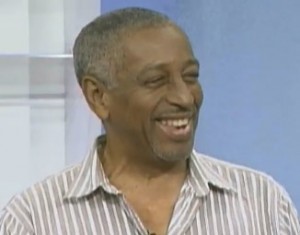
In the second half of the 19th century, Cuba and Puerto Rico were the last Spanish colonies in America and Cuba was the largest sugar producer in the world, whose sugar production was based on slave labour.
On Oct. 10, 1868, the Cubans started the 10-Year War. Two weeks after, Mariana Grajales Cuello, Antonio Maceo’s mother, brought together her husband and 13 children, asked them to kneel in front of the image of Jesus Christ and swear to struggle until Cuba was independent or to die trying.
Most of the male members of her family died in combat, prison or exile, including her husband Mariana who died in 1873 in Kingston, Jamaica.
Few Blacks and mulattoes became generals in the 10-year War. Maceo, with five bullets in his chest, became major general in 1877 and the most successful of Cuba’s generals, feared by the Spaniards and beloved by the Cubans.
In 1878 the revolution was declining rapidly throughout the island, due to regional divisions among Cubans and white conservative sector concerns of the growing influence of Black officers.
The Cuban Provisional Government agreed to stop the war and sign the Zanjon Peace Treaty which gave amnesty to the rebel fighters and freedom to the slaves who were fighting on both sides.
Antonio Maceo with his brothers and a group of officers refused to stop the war without independence and the abolition of slavery. They continued the war, although soon it was obvious they were totally isolated.
To save Maceo’s life he was sent to Jamaica, where he lived with his mother, his family and some of the officers that had joined him in the protest. Maceo also lived in Costa Rica, Panama and The Dominican Republic, among other territories.
The Spanish tried to kill him on several occasions and exerted pressure on different governments in the region to prevent his return to Cuba.
Together with the great Cuban patriot and intellectual Jose Marti, General Maximo Gomez and other Cubans in exile, he organized the plan for the new rebellion. Maceo was appointed second in command to Maximo Gomez.
In April 1895, Maceo landed in Cuba. Within one month, thousands of men joined him and the War of Independence (1895-98) was resumed. Gomez and Marti landed in May 1895. Marti died in combat almost three weeks after.
Maceo and Gomez executed the greatest feat of the Cuban struggle for independence, the invasion from east to west, 1776 km in 78 days, leading around 3,000 Cuban patriots against an army of 200,000 men with the latest weaponry and more than 42 Spanish generals.
After going to the most western point and raising the Cuban flag, Maceo fought for months with little more than 1,000 men against 70,000 Spanish soldiers in Pinar del Rio, the narrowest province.
Maceo died when two bullets struck him; his 25th and 26th wounds in combat. He was 53.
Both Maceo and Marti understood the danger of U.S. imperialist ambitions and their expressed desire to take over the wealthy and strategically positioned island of Cuba, and they both vigorously rejected this possibility.
The U.S. government never recognized nor honoured Cuba’s struggle and placed all types of obstacles in the path of Cuba’s independence struggle.
In the middle of the War of Independence they tried to purchase Cuba from Spain. In 1898 Spain was very weak, they were unable to continue the war much longer.
One night, mysteriously, the U.S. warship USS Main exploded in Havana harbour. The U.S. used this as excuse to start the Spanish American War that lasted 10 weeks.
In Santiago de Cuba, the U.S. Navy by sea and the Cuban rebels by land defeated the Spaniards. But the Cuban revolutionaries were not allowed to enter the city and were excluded from negotiations that led to the transfer of Cuba from Spain to the U.S. The U.S. Army took over the island from 1898-1902, forestalling Cuban Independence.
The U.S. military government forged an alliance with the Spanish elite and the most conservative elements of the white sector of the revolution. Blacks and mulattoes were excluded and marginalized.
The U.S. military refused to leave unless Cuba accepted inclusion of the Platt Amendment in the 1901 Constitution, which made Cuba into a U.S. protectorate, inclusive of Guantanamo Bay.
Osvaldo Cardenas is vice-president of the Association of Cubans Resident in Jamaica.


